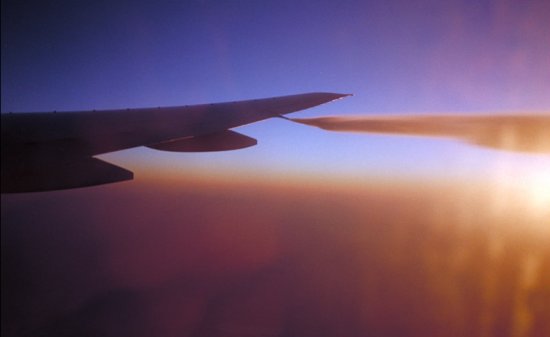|
||||||||||
|
|
||||||||||
|
||||||||||
|
|
||||||||||
It is certainly possible for a plane to land safely when heavier than its maximum certified landing weight. This weight is based on more than just the structural limitations of the plane but takes factors like runway length, center of gravity limits, and flap deflections into account. Airline pilots are often forced to land at weights above the certified limits because of bad weather, scheduling, or fuel conservation requirements. While such landings pose no safety danger to the passengers, a maintenance inspection is required any time a plane lands above its certified landing weight. The length and complexity of this check can vary depending on the quality of the landing. If it is smooth and uneventful, the inspection may be brief. A hard landing, on the other hand, might require a time-consuming and maintenance-intensive checkout that takes the plane out of service for a considerable length of time.

A typical fuel dumping system employs a series of pumps and valves to eject fuel from the aircraft's wingtips. Other designs place the fuel dumping vents in a plane's tail or aft fuselage. When activated from the cockpit, a fuel dump system often is capable of releasing thousands of pounds of fuel per minute. Most systems are sized to release fuel at a fast enough rate that the plane's total weight is reduced from maximum takeoff weight to maximum certified landing weight in fifteen minutes or less.
Once released, the fuel trails behind the aircraft and creates a pattern that looks much like a contrail. Modern aviation fuel comes in many varieties but all are derivatives of kerosene. Kerosene evaporates rapidly in the atmosphere and very little typically survives in liquid form to reach the Earth's surface. The exact evaporative characteristics of dumped fuel depends on a number of factors like the altitude at which it was released, the atmospheric temperature, and the dumping pressure. Kerosene dumped at high altitude on a warm day tends to evaporate fastest.
The Federal Aviation Administration (FAA) sets requirements for when and how fuel dumping may occur in Order 7110.65P, Chapter 9, Section 5. This instruction stipulates that fuel can only be dumped above a minimum altitude of 2,000 ft (610 m), to improve its evaporation, and that a dumping aircraft must be separated from other air traffic by at least 5 miles (8 km). Air traffic controllers are also instructed to direct planes dumping fuel away from populated areas and over large bodies of water as much as possible. The same guidelines apply to military aircraft, and most air bases only permit fuel dumping in a specified area.
Despite these restrictions, environmental groups have expressed concern over the potential pollution implications
of fuel dumping. It has been estimated that as much as 15 million pounds of fuel was released over the world's
oceans by commercial and military aircraft during the 1990s. Although kerosene poses no danger to the ozone layer,
it is a petroleum product that can impact water quality much like an oil or gasoline spill.
- answer by Jeff Scott, 2 October 2005
Related Topics:
Read More Articles:


|
Aircraft | Design | Ask Us | Shop | Search |

|
|
| About Us | Contact Us | Copyright © 1997-2023 | |||
|
|
|||